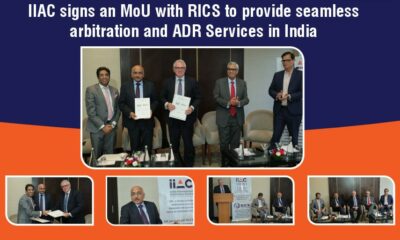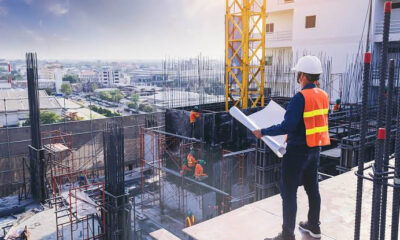News
The State Of Real Estate




While the infrastructure kept pace with the overall growth, though slowly, the developments in the housing sector lagged. Currently there is a shortage of approximately 18 million housing units in the country. To accommodate the burgeoning population in our metros there is need for additional number of dwelling units.
Of all the big cities and state capitals, Delhi and Mumbai regions alone account for a significant portion of the total residential demand in the country. It is therefore imperative that the two metros should have ample supply of land for further development. In case of Delhi, the Master Plan of Delhi 2021 envisages development of several hundred acres of land for accommodating an additional population of 48 lakh by 2021, up from the current 1.6 crore. Rough estimates suggest that there is around a lakh hectare of unutilized land in and around Delhi under various agencies.
In this regard, to meet the housing challenges within the National Capital Region, the urban development ministry has approved the modification regarding the Land Pooling Policy in Master Plan Delhi 2021 (MPD2021).
Under this policy, land owners can surrender their land holding into the joint development, and become one of the stakeholders to the development proposed on their land. Once the land is pooled, the landowners will get back 40-60 per cent of the total land surrendered, as developable land. The policy envisages 40 per cent land will be kept with DDA for land parcels above 20 hectare and 60 per cent for land parcels below 20 hectare. The development fee as decided under the policy shall be payable by the land owner.
The ministry’s move is laudable, as the new policy will serve two purposes. First it will free up the locked land within the city and second, it will help checking the sharp rise in property prices in NCR’s peripheral districts such as Gurgaon, Noida Greater Noida and Ghaziabad. Property prices are a function of the availability of land at cheaper rates. Over the past one decade, the appetite of investment as well as the demand for land has risen phenomenally. This has put the burden on apartment prices as well. With a huge demand for dwelling units, and lesser supply of land in the market, there is very little room for any rationalisation in prices.
Property prices have now reached a premium in central areas and are already sky-high in Gurgaon and Noida. Excess of land made available for residential development by way of Land Pooling Policy will check the upward movement of pricing.
In addition, the policy will be an alternative to the land acquisition process. The new land acquisition policy passed by Parliament has made the process of acquisition difficult. It is likely to delay the projects and put pressure on developers to keep the prices at a premium. This way, the land locked in private hands can therefore be freed for better use. On the other hand, landowners involved will also benefit by way of fair transactions under the pooling scheme. States of Gujarat and Maharashtra have successfully implemented the policy. Of the many benefits, what these states have achieved is to provide equal share of benefits earned by way of creating world class infrastructure on these pooled land parcels.
However, there are concerns. There are land parcels locked due to litigations, lack of clear titles, and disputes arising over the ownership and nonpayment of loan etc. Before the implementation of the policy, such properties have to be cleared from disputes. This may delay the process. While there are concerns, the policy’s approval is a move in the right direction – a first of the many innovative methods towards easing the land availability in the market
(The writer is Managing Director, RICS South Asia)
-



 News4 weeks ago
News4 weeks agoKW Delhi 6 Mall Onboards New Brands
-



 News4 weeks ago
News4 weeks agoManasum Senior Living Launches IKIGAI GOA, A Senior Living Community in North Goa, in collaboration with Prescon Homes
-



 News4 weeks ago
News4 weeks agoBridging India Divide: Top 5 Tier- 2 Cities to Focus On
-



 News4 weeks ago
News4 weeks agoCommercial Realty Gets Tech Savvy: Fast Construction, Enhanced Convenience
-



 News3 weeks ago
News3 weeks agoGodrej Properties Sells Rs 3k cr+ Homes of Godrej Zenith, Gurugram, within 3 days
-



 News4 weeks ago
News4 weeks agoMultipoint Connection – A Definite Boon
-



 News3 weeks ago
News3 weeks agoRBI’s Status Quo on Key Policy Rates to Help Maintain the Real Estate Growth Momentum, Say Industry Stalwarts
-



 News2 weeks ago
News2 weeks agoOlive Announces Dhruv Kalro as Co-Founder



























